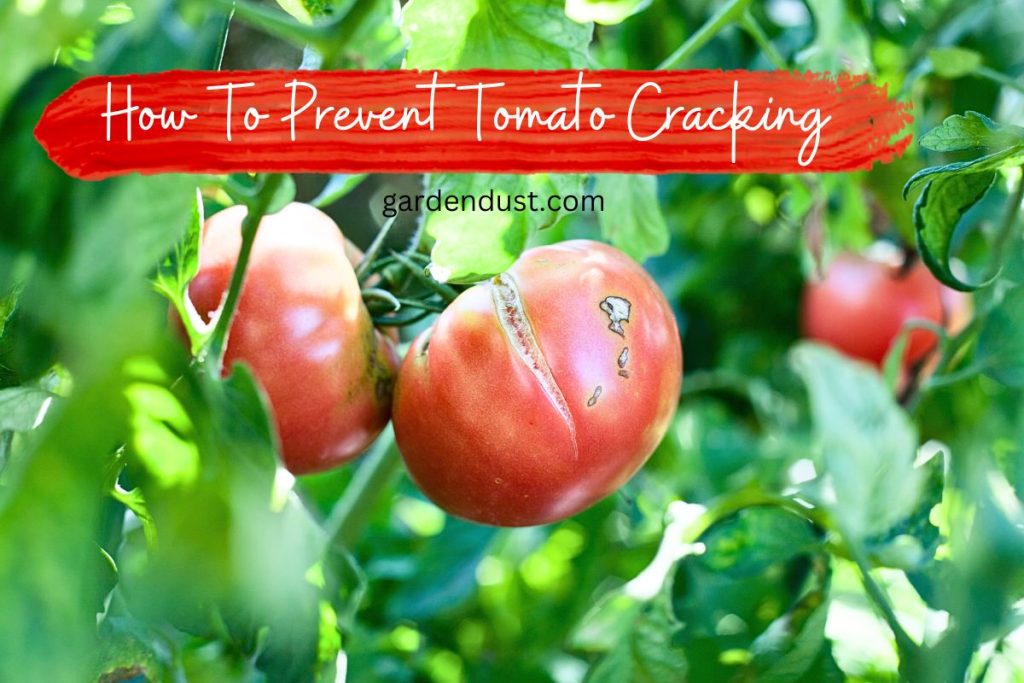What Is Tomato Cracking?
Tomato cracking, also known as fruit cracking or fruit splitting, is a common problem that affects tomatoes. It refers to the appearance of cracks on the skin of the fruit. Understanding the symptoms, causes, and potential cures for tomato cracking is essential for managing this issue effectively. Let’s see detail about how to prevent tomato cracking….

Symptoms :-
Tomato cracking is characterized by the formation of cracks or fissures on the skin of the fruit. The cracks can vary in size and severity, ranging from small, superficial cracks to deep splits that extend through the entire fruit. The cracks typically appear at the stem end (top) or on the sides of the fruit, although they can occur anywhere on the tomato.
What Causes of Tomato Cracking?
Tomato cracking is primarily caused by fluctuations in moisture levels and internal pressure within the fruit. The three main types of tomato cracking are:
- Radial Cracking: This type of cracking appears as concentric circles around the stem end of the tomato. Radial cracking occurs when the fruit absorbs water rapidly after a period of dryness or water stress. The sudden intake of water causes the fruit to expand faster than the skin can stretch, resulting in radial cracks.
- Concentric Cracking: Concentric cracking forms circles or rings of cracks on the top of the tomato. It is often associated with excessive rainfall or overwatering. When the tomato absorbs a large amount of water, the internal pressure increases, leading to concentric cracking.
- Shoulder Cracking: Shoulder cracking occurs on the sides of the tomato near the stem. It is commonly caused by a combination of factors, including irregular watering, extreme temperature fluctuations, and varietal susceptibility. The uneven expansion and contraction of the fruit due to these factors contribute to shoulder cracking.
How to prevent Tomato Cracking?
Although it may not be possible to completely eliminate tomato cracking, several measures can help reduce its occurrence and severity:
- Consistent watering: Maintain consistent soil moisture by providing regular, even watering. Avoid allowing the soil to dry out completely and then overwatering the plants. Drip irrigation or soaker hoses are effective methods for delivering water directly to the roots and minimizing moisture fluctuations.
- Mulching: Apply a layer of organic mulch, such as straw or wood chips, around the base of the tomato plants. Mulch helps retain soil moisture, regulates soil temperature, and reduces moisture stress on the fruit.
- Adequate drainage: Ensure proper soil drainage to prevent waterlogging, which can contribute to tomato cracking. If the soil is heavy and poorly draining, consider amending it with organic matter or creating raised beds to improve drainage.
- Shade and protection: Provide shade for the tomato plants during periods of intense heat to prevent excessive temperature fluctuations. Using shade cloths or row covers can help protect the plants from extreme weather conditions.
- Select appropriate varieties: Some tomato varieties are more prone to cracking than others. Research and choose tomato varieties known for their resistance to cracking, particularly in your specific climate and growing conditions.
- Harvesting: Harvest ripe tomatoes promptly to prevent over-ripening and cracking. Gently twist or cut the fruit from the vine, being careful not to apply excessive pressure.
Tomato cracking can be a frustrating problem for growers, as it affects the appearance and marketability of the fruit. While it may not be entirely avoidable, implementing proper watering techniques, mulching, providing shade, and selecting crack-resistant varieties can significantly reduce the incidence of tomato cracking. By adopting these preventive measures, you can enjoy a higher yield of visually appealing and delicious tomatoes from your garden. Happy Gardening….






